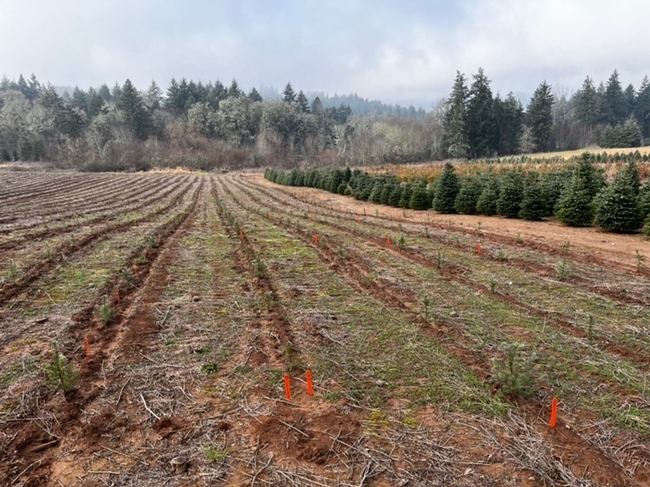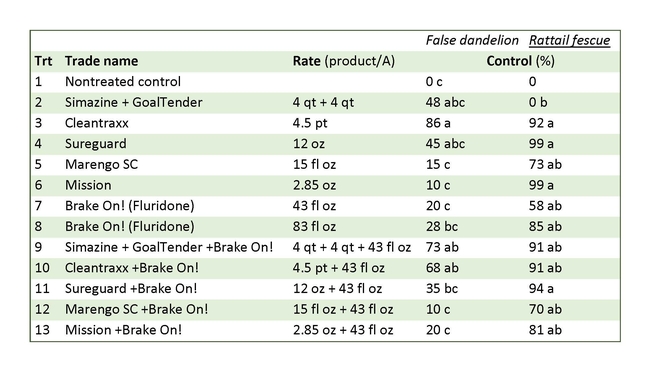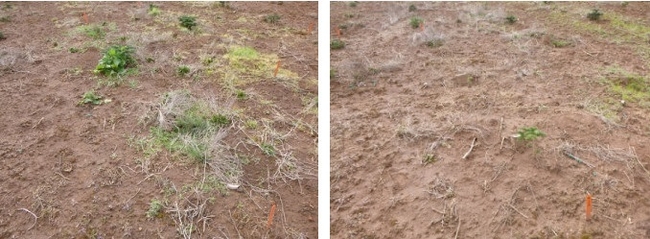Oregon leads the United States in the production of Christmas trees, with almost 8.5 million trees sold in 2015. Weed control is essential in Christmas trees to reduce competition for moisture and nutrients, allow fast and robust tree growth, and ensure growers top prices for high-quality trees. Research is needed on weed management in Christmas trees in the West to ensure they remain economically competitive. Herbicides are the primary weed control option for Christmas tree growers, but options are limited, and herbicide-resistant weeds challenge weed control. Herbicide resistance has increased weed management costs in Christmas trees; growers must now turn to mixtures of herbicides or planned rotations. Increased diversity of herbicide modes of action is needed to manage herbicide-resistant weeds and to maintain the competitiveness of Oregon Christmas tree production.

Four field studies were initiated between January and February of 2022 in commercial Christmas tree farms in the Willamette Valley. The trees were Douglas fir and Nordman fir in the second year after transplanting. A single application was made over the top of the young trees mimicking growers' practices with other herbicides.
Initial Results
The study is ongoing, but I will share some data from 12 weeks after the treatment. To date, no crop injury has been observed in any of the studies in Douglas Fir or Nordman fir treated with Fluridone at the expected field rate and twice that, equivalent to a Brake On! rates 43 and 83 fl oz/A. These encouraging results include growth measurements unaffected to date by these treatments. Growth measurement data are not shown.
Most of the research sites had low weed pressure, making it difficult to assess weed control. Postemergence herbicides were not included in the treatments. One of the fields planted with Nordman firs was infested with false dandelion (Hypochaeris radicata) and rattail fescue (Vulpia myuros). Most of the treatments did not provide good control of false dandelion that was present at the time of the application. Fluridone did not control false dandelion (<28%) regardless of the rate but did control rattail fescue (58–85%) (Table 1). When Brake on was used in mixtures, the mixture of simazine + Goal Tender + Brake On resulted in 73% control of false dandelion and 91% control of rattail fescue. Cleantraxx controlled 86% of false dandelion and 92% of rattail fescue.
Mixing fluridone with other preemergence herbicides will expand the spectrum of weeds controlled in Christmas tree plantations. Simazine and Goal Tender were included in this study as the grower standard treatment. Fluridone improved weed control compared to that mixture. The results are becoming more apparent as the season progresses (Figure 2), and we will continue assessments during the 2023 season.
Fluridone is currently not registered in Christmas tree, but the initial results are promising and will be used to support a future registration of Brake On! in Christmas tree.
Acknowledgments
I would like to thank the many Christmas tree growers that hosted studies, and the support from the Christmas Tree Promotion Board.
* * * * * * * * * *
Marcelo Moretti is a Weed Science Assistant Professor in the Department of Horticulture at Oregon State University. He is also an alum of the Hanson Lab at UC Davis.
Original source : Weeders of the West blog

